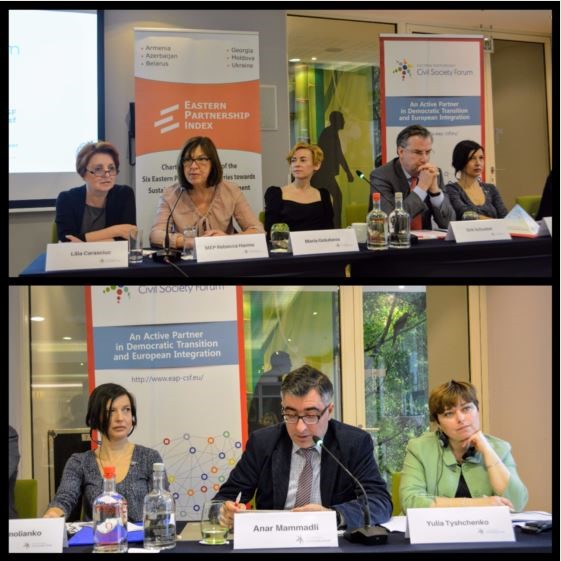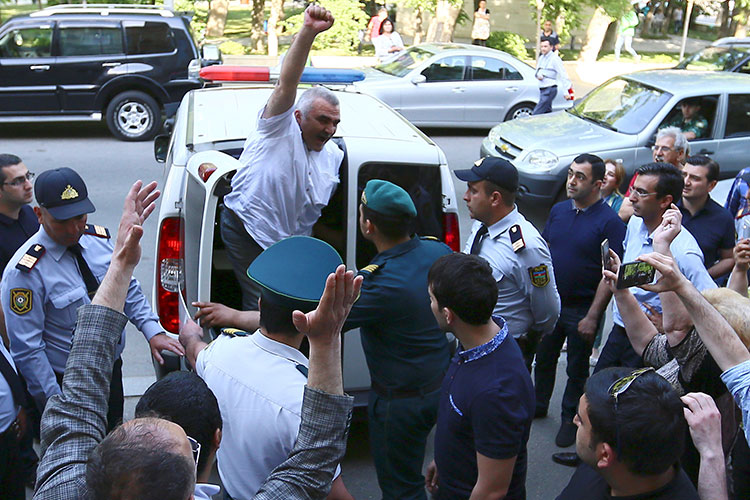The EaP CSF produced a detailed commentary to the Joint Staff Working Document (JSWD) “Eastern Partnership – Focusing on key priorities and deliverables”, issued by the European Commission and the European External Action Service in December 2016.
It is the EU’s second comprehensive attempt to set clear and time-focused benchmarks for the Eastern Partnership policy. In comparison to the first Joint Communication “Eastern Partnership: A Roadmap to the autumn 2013 Summit”, the new document is less conceptualized, but more detail-oriented and takes a straightforward approach towards identifying the existing gaps and providing tailor-made solutions.
The JSWD sets 20 main deliverables in the four key priority areas defined by the EaP Summit in Riga:
- economic development and market opportunities;
- strengthening institutions and good governance;
- connectivity, energy efficiency, environment and climate change;
- mobility and people-to-people contacts.
Each of the deliverables contains milestones to be achieved by the next 2017 EaP Summit, targets by 2020, main actors responsible for their achievement and implementation means. Introducing a transparent set of goals provides a good opportunity for public debate, involvement of a wider range of stakeholders, preserving policy’s inclusiveness, creating a means for public monitoring and assessment. This could also create a deeper ownership and understanding of the European integration both in the EaP countries’ societies and in the EU.
The policy brief focuses on the proposed key priorities for 13 major deliverables by analysing the following aspects:
- Feasibility: is the implementation of a given target set by 2020 realistic?
- Ambitiousness: is the target set by 2020 ambitious enough?
- Appropriateness: should more appropriate targets and benchmarks be suggested?
- Risks: are there obstacles that could turn the target set for 2020 unrealistic?
- Differentiation: what impact could the achievement of a given target have in a particular EaP country?
The JSWD is a step forward in terms of providing an elaborate set of concrete deliverables to be achieved by the EaP Summit and 2020. The proposed 87 milestones and targets, combined with 94 means of implementation and more than 70 different responsible actors indicate that the EaP is moving in the right direction and is taking another step forward. There is a clear emphasis on the multilateral aspect, promoting the emergence of the EaP as a region and building an interlinkage between the EaP countries. The “inter-EaP” format could be strengthened by including common communications frameworks, elements of EaP “free trade area”, networking in different sectors and common security.
The analysis of main actors’ involvement into implementation process shows the European Commission and EaP Ministries as the main actors in most of the deliverables with much smaller share of responsibility allocated to other actors. The role of EU Member States remains quite limited. The role of the civil society is highlighted but its involvement could be considerably expanded.
Civil society is among the three cross-cutting (horizontal) deliverables that also include gender equality and non-discrimination, and communication. Prioritization of these selected issues makes them obligatory to be taken into account when implementing all other targets. It is recommended however to include horizontal priorities into the sectoral parts to avoid their marginalization and have the concrete targets for them related to other deliverables as well. The CSOs should be included as one of the actors in most of the sections, but especially in the sections concerning the rule of law, anti-corruption and judicial reforms.




